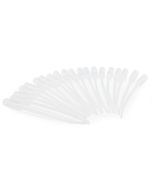Boron

Boron is one of the micronutrients essential for plant growth. It may be present naturally in water, or find its way into a watercourse through industrial waste effluents. Boron in excess of 2.0 mg/L in irrigation water can be detrimental to plant growth, some plants may even be adversely affected by concentrations lower than 1.0 mg/L (ppm). The United States Department of Agriculture (USDA) reports the following classification:
| Boron (ppm) | Effect on crops |
| < 0.5 good | except for very sensitive crops |
| 0.5 to 2.0 some risks | many crops must be excluded |
| > 2.0 dangerous | may only be used for very tolerant crops |
The average abundance of boron in soils is 18 to 63 ppm, in streams it is 10 μg/L, and in groundwaters it is 0.01 to 10 mg/L. The most common form of boron in natural waters is H3BO3. The most important mineral is borax, which is used in the preparation of heat-resistant glasses, detergents, porcelain enamels, fertilizers, and fiberglass.
Drinking water rarely contains more than 1 mg B/L and generally less than 0.1 mg/L, concentrations considered safe for human consumption. The ingestion of large amounts of boron can affect the central nervous system, with protracted ingestion resulting in a syndrome known as borism.
Chemical Test Kits
Boron testing is performed with a chemical test kit. A pH meter is used for sample preparation and for the determination of the pH titration endpoint. Below are the chemical test kit, replacement reagents, calibration buffers, and if needed, replacement pH tester.





